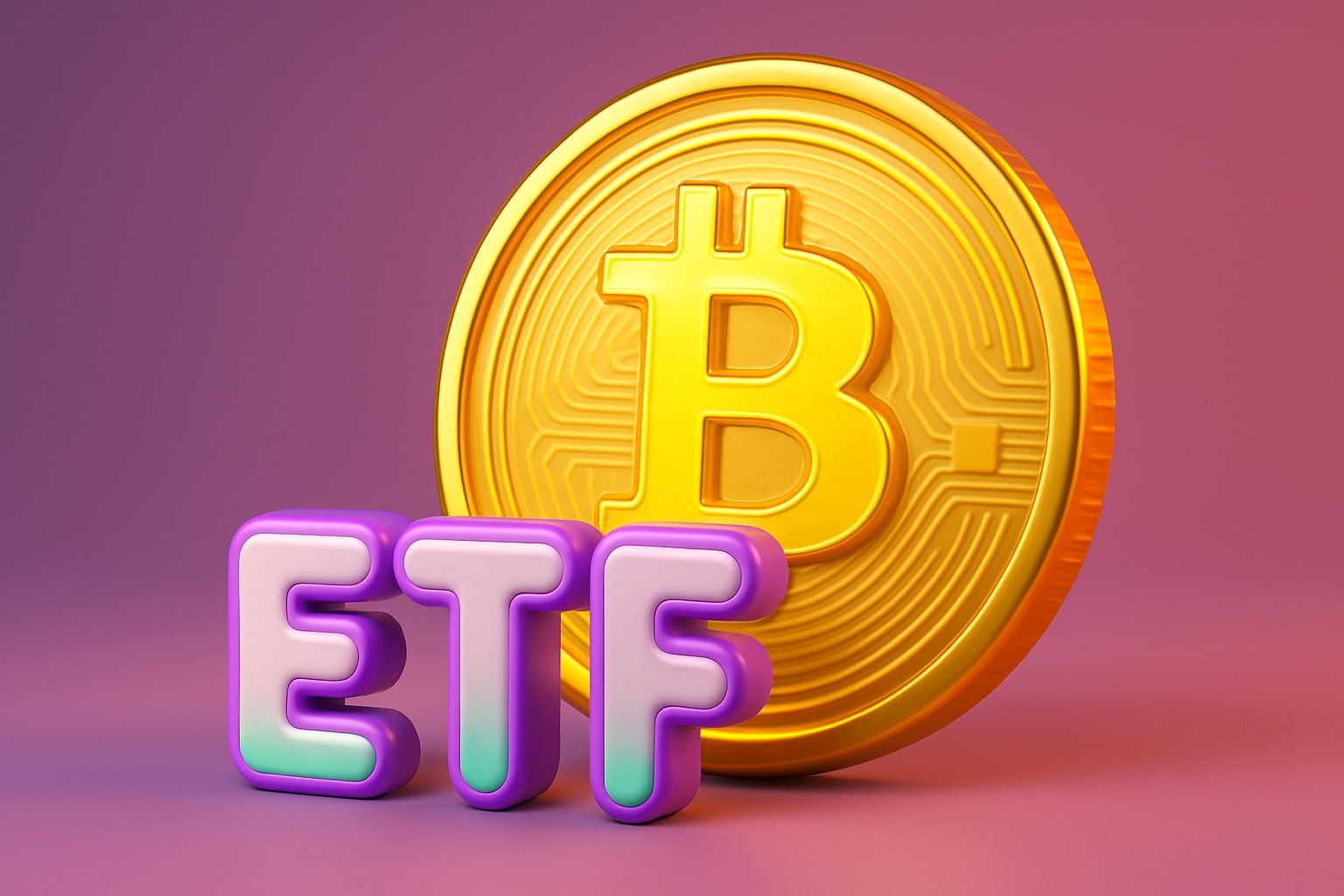
Solana Price Forecast - SOL-USD Falls to $175 With Record $417M ETF Inflows
Solana (SOL-USD) tumbles 6% amid market volatility, despite massive institutional inflows into BSOL and GSOL ETFs totaling $417 million | That's TradingNEWS
Solana (SOL-USD) Drops to $175 as ETF Inflows Clash with Weak Retail Demand and Rising Outflows
Solana (SOL-USD) trades near $175.32, marking a 6.09% intraday decline and extending its weekly losses beyond 12% as heavy selling pressure collides with a surge in institutional activity through newly launched ETFs. The cryptocurrency fell sharply from the $250 October peak, breaking below multiple key supports, including the 200-day EMA at $187, signaling a structural shift in market momentum. Despite record inflows into the Bitwise Solana Staking ETF (BSOL) and Grayscale Solana Trust (GSOL), retail participation remains subdued, amplifying volatility around the $174–$177 support zone.
Institutional Flows Hit Record $417 Million as Spot ETFs Reshape Market Structure
The introduction of Solana-focused ETFs has been transformative, attracting unprecedented institutional demand even as spot prices falter. Bitwise’s BSOL alone saw $417 million in inflows during its first trading week, while Grayscale’s GSOL added $199.21 million, marking Solana’s strongest institutional inflow month in history. Combined ETF demand now represents nearly 0.5% of Solana’s total supply, a remarkable figure given the token’s 2025 market capitalization near $80 billion. This institutional endorsement mirrors early Bitcoin ETF adoption, signaling that large investors view Solana’s proof-of-stake network as the next high-throughput settlement layer for tokenization and DeFi infrastructure.
However, the inflow narrative has a double edge: while ETFs enhance liquidity and legitimacy, they also expose Solana to institutional sentiment shifts. Should macro uncertainty or regulatory pressure tighten risk appetite, these funds could rapidly unwind exposure, mirroring previous drawdowns seen in Ethereum ETFs.
Retail Activity Collapses as Futures Traders Exit Positions and Funding Turns Negative
While institutional inflows surged, retail participation has collapsed. Data from CoinGlass shows SOL futures Open Interest fell 1.56% to $10.16 billion in the last 24 hours, reflecting aggressive deleveraging among short-term traders. The funding rate at -0.0078% confirms that bearish traders are paying a premium to hold short positions — a clear indication of dominant negative bias. Over $43.1 million in long liquidations were recorded within 24 hours, vastly outweighing just $1.9 million in short liquidations. This liquidation imbalance drove the long/short ratio down to 0.91, marking the lowest point in six weeks.
Such derivatives dynamics amplify spot market weakness, particularly when combined with fading retail volumes. Exchange data shows $79.17 million in spot outflows on Friday alone — one of the largest single-day withdrawals since September. These outflows indicate that traders are either exiting risk or moving assets to cold storage in anticipation of further downside.
Technical Structure: Solana Tests Final Support Before Breakdown Toward $153–$156 Zone
Solana’s technical structure has deteriorated sharply, with the coin slipping beneath both its 50-day and 100-day exponential moving averages, confirming a medium-term downtrend. The 0.5 Fibonacci retracement level at $175.68 is the final support zone before deeper losses toward the 0.382 level near $156.15, coinciding with August’s accumulation range. RSI currently reads 37, teetering above oversold territory but with no confirmation of bullish divergence, implying continued seller control.
If $174 breaks decisively, price models project an extension to $153–$156, a zone where long-term buyers may reemerge. Conversely, a rebound above $190 could open the path to retest $210, aligning with the descending resistance trendline that has capped rallies since September.
Network Strength and On-Chain Fundamentals Remain Dominant Despite Price Weakness
Beyond price action, Solana’s on-chain ecosystem remains one of the most active in the crypto market. The network processes over 100 million daily transactions, hosting more than 2.5 million active accounts — nearly 100 times higher than Ripple’s (XRP) daily user base. These statistics reinforce Solana’s leadership in transaction throughput, cost efficiency, and developer activity.
Additionally, ecosystem expansion continues at a rapid pace. Western Union’s plan to launch a Solana-backed stablecoin by 2026 underscores the network’s growing adoption in remittance infrastructure. Meanwhile, institutional staking continues to rise as yield-bearing products tied to BSOL and GSOL drive demand for locked tokens. These trends confirm that despite near-term weakness, Solana’s utility-driven growth story remains intact.
Investor Psychology: The $200 Level as a Critical Sentiment Barrier
The $200 price zone remains both a technical and psychological pivot for Solana traders. Historically, it has represented a decisive threshold between accumulation and breakout. Failure to reclaim this zone reinforces bearish sentiment, while a successful breach often ignites a rally toward $250–$260, last seen during September’s speculative cycle.
Market psychology around this level is shaped by fear of missing out (FOMO) versus capitulation pressure. Retail investors have historically returned aggressively only after confirmation above $200, while institutional whales begin scaling in during panic-driven dips below $175. This emotional asymmetry often defines Solana’s mid-cycle consolidations and provides a roadmap for re-entry once volatility subsides.
Read More
-
SCHY ETF Price Holds $28.20 as Global Dividend Rotation Strengthens and Yield Reaches 3.62%
03.11.2025 · TradingNEWS ArchiveStocks
-
XRP ETFs XRPI and XRPR Slide 10% as Ripple Swell 2025 and SEC Decision Set Stage for $3.60 XRP Breakout
03.11.2025 · TradingNEWS ArchiveCrypto
-
Natural Gas Prices Surge to $4.16 as OPEC+ Policy and Winter Demand Drive Next Leg Higher
03.11.2025 · TradingNEWS ArchiveCommodities
-
USD/JPY Price Forecast - Yen Holds Near 154 as Japan’s Massive $92B Stimulus
03.11.2025 · TradingNEWS ArchiveForex
Comparative Analysis: Solana’s Outperformance Over Ethereum in Efficiency Metrics
While Solana’s short-term correction has rattled sentiment, efficiency metrics show it outperforming Ethereum (ETH-USD) in both transaction speed and cost. Solana averages 65,000 TPS (transactions per second) at sub-cent fees, compared to Ethereum’s 15 TPS and gas fees often above $0.70 per transaction. Institutional traders view this efficiency gap as a decisive advantage for scalable settlement solutions, especially as tokenization and real-world asset (RWA) integrations expand.
The Bitwise CIO Matt Hougan emphasized Solana’s superior on-chain revenue and network earnings as the main driver of ETF interest. Analysts forecast that cumulative Solana ETF exposure could exceed $5 billion, equivalent to 5% of circulating supply, within two years if institutional adoption continues at current pace.
Liquidity Stress and Funding Rotation Toward Defensive Assets
Despite structural strength, liquidity stress has emerged as traders rotate toward Bitcoin and stablecoins. Coinglass data shows a $75.76 million net outflow in spot Solana positions on Monday, suggesting capital is moving to safety amid macro volatility. The Money Flow Index (MFI) dropped to 16.84, highlighting substantial capital outflows and limited new inflows. However, this extreme reading also signals an oversold condition that often precedes rebound attempts.
Simultaneously, SOL ETF holdings continue to expand despite spot selling — a rare divergence suggesting that institutional and retail investors are trading opposite sides of the market. Historically, such splits have resolved with sharp short-covering rallies once derivative funding normalizes.
Macro Factors: Dollar Strength, Fed Policy, and Crypto Correlation
Broader macro dynamics weigh heavily on Solana’s near-term performance. The U.S. Dollar Index (DXY) hovering near 99.9 strengthens headwinds across risk assets, while persistent uncertainty over the Federal Reserve’s next rate decision curbs speculative appetite. Cryptocurrencies with higher beta — like Solana — typically react more violently to liquidity shifts, amplifying downside volatility. However, if inflation readings soften and the Fed signals a dovish tilt in December, it could spark renewed rotation into high-yield blockchain assets, positioning Solana among the early beneficiaries.
Market Sentiment and Derivatives Positioning Suggest Late-Stage Capitulation
Sentiment indicators suggest the market may be nearing capitulation. Long-term holder distribution data (“Age Consumed” metric) has spiked, meaning dormant tokens are re-entering circulation — a behavior commonly observed at late stages of downtrends. While this may signal short-term weakness, it also often precedes bottoms as early investors rebalance portfolios.
Futures open interest compression, declining funding rates, and rising short interest all mirror patterns seen before previous SOL-USD rebounds, particularly during the June and August 2024 corrections, which both preceded 35–50% rallies within weeks.
Verdict: BUY — Short-Term Volatility, Long-Term Strength Toward $250 Target
Based on multi-layered analysis — combining institutional ETF inflows, on-chain resilience, and oversold technical conditions — Solana (SOL-USD) presents a BUY opportunity for long-term investors despite short-term pressure. The critical zone at $170–$175 remains the structural floor, while a confirmed breakout above $190–$200 would reestablish upward momentum toward $250.
The near-term outlook is volatile, but network fundamentals, developer traction, and ETF-driven institutional exposure justify a bullish medium-term stance, positioning Solana as one of the most strategically resilient assets in the digital ecosystem heading into 2026.

















